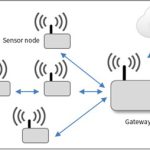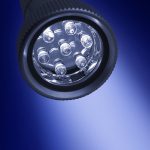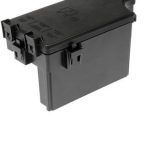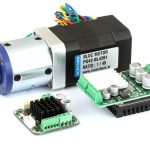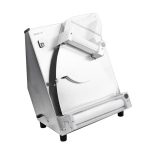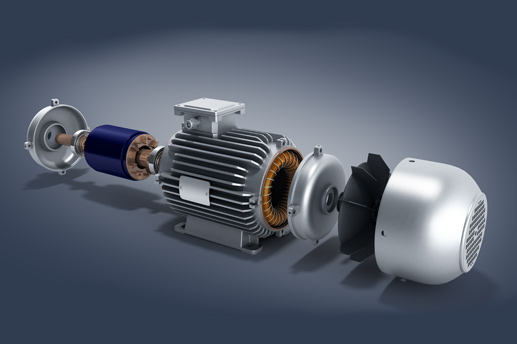
Electric motors, as everyone knows, are used for the rotation of anything and there are many variants, sizes, powers, and purposes of electric motors. These are being used in motion control systems, engines, and all other places. These are known as electromechanical devices that convert electrical energy to mechanical energy.
Its fitting, power, and purpose are technically measured. It is suing from small toys to the largest water pumping option, but the purpose is different at all different places.
Before going further, you need to understand the purpose of the Electric Motors and their types accordingly. Below-mentioned list is the list of the most common types of motors.
- Stepper motor
- Servo meter
- Linear motor
- Direct drive
- DC brushless motor
- DC brushed motors
- AC brushless motors
- Series DC motor
- Shunt/parallel motors
- Compound DC motors
- Permanent Magnet DC motor
These are Electric Motors that can be used either in toys or electronic gadgets. In this article, we will discuss one by one motor and learn their principles.
Stepper Motors:
This motor usually includes the internal rotor, and it is manipulated by the external magnets electronically. This rotor is made up of soft metal or sometimes made of magnets. If we talk about the principles of the motors, then when the winding of the motor is energized, then the teeth and magnetic field align in one direction. Because of this, it starts moving from point to point with a fixed increment.
So, before the installation of this motor, one needs to understand its use and principles. Not all Electric Motors are set in all places.
Servo Electric Motors:
It is a motor with a feedback sensor that helps it to position, and these are good for robotics. This is joined with the sensor, and it is being used for linear and rotary purposes. These are the best motors that are good in performance. Again, this is good in robotics and using AI tools that sense the situations and react accordingly.
Linear Electric Motors:
There is an unrolled stator and a motor. The main thing about them is they produce the linear force, and that’s why it is called the linear motor.
These are faster and are being used indoors with sliding and actuators. Add to this, these are good for the handling of baggage, and large-scale materials transportation, from one end to the other end.
Direct Drive:
It is another type of motor that is very much efficient, and it replaced the conventional servo motors. These use low-wear technology and are good in use.
Direct motors’ acceleration power is much higher, and their life is also long.
DC Brushless Motors:
These are small in size and better than that brush motors. Add these; their model I different, DC, and better than AC models. There is always an embedded controller in these motors and this controller help in the operations of the motor. Sometimes commutator is missing in these motors, and internal controller helps them in operations.
DC Brushed Motors:
There is a brush orientation and a stator that determines the flow of current. A commutator is essentially required in the brush motors.
AC Brushless Electric Motors:
Firstly, AC stands for alternating current, and these motors are without brushes. Secondly, these are very commonly used motors in motion controllers. There is induction produced by the rotation and generates a magnetic field. Finally, this is produced in a stator and forces them to move the stator and rotor.
Permanent Magnet DC Motors:
This motor always has a permanent magnet that creates the magnetic field. Because of the magnetic field, no further current is required for excitation. These are very common in use, and all industries use them, especially automobiles, air conditioning, starters, and wipers.
Shunt DC Electric Motors:
There is armature winding set in parallel, and this is known as a shunt. These shunts are excited from the windings, and they append the speed in the motion of the motor. These are efficient and commonly used motors.
Series DC Electric Motors:
Few turns with a large size wire and full armature wires current. Moreover, series DC Motors have more starting torque. Other things important in them, without load these motors could be damage. These are not suitable for applications that use variable speed.
Compound DC Electric Motors:
Such motors have good starting torque and are not good for variable speed applications; and they have a shunt field, and it is excited separately. In addition, this is the working principle of the Compound DC motor.
In addition to this, in AC, there are many other types of motors. Induction motors and synchronous motors are two major types of alternative current motors.
Motor Types Chart – Very Helpful for the Engineers:
However, motors are being used in all the devices and gadgets, from egg mashers and coffee makers to the lar air jets. All electronic functional things include motors that have different impacts and purposes on the things.
In addition to this, there are three-phase motors, which are very common nowadays. If we are using 3-phase AC motors, they are very economical in use. And these motors require less amount of conductor’s materials that supply electricity.
Most of the developed countries are using only 3-phase motors because of their performance and economics.
Other Advantages of Three Phase Motor:
It has three phases and one, and this motor splits the electricity load into three parts; in this way, it loads on one phase. For instance, if you are using three air conditioners and you have 3 phase motor, then you can easily set to use a specific phase for the specific air conditioner. In this way, 3 phase motor work and balances the power load all the time.
Add to this, 3 phase motor uses a lower cost of electricity consumption as compared to a single-phase AC motor. Low consumption, in the long run, can save a huge amount of electricity and cut short expenses. So, using a 3-phase motor reduces the load and cost as well.
Add to this, in single phase motor connection, there are only two wires, and these are said to be;
- Phase
- Neutral
But in three phase motor connection, there are three wires. Three wires are a conductor, and one is a neutral wire.
The use of a motor depends upon the requirement, usage, and purpose. Sometimes electrical engineers essentially install 3 phase motor, and sometimes only a small size DC motor is required. After reading this article, you are now able to finalize the right type of motor for your circuit and application.
So, there are two major types of motors, AC and DC. Both have their own principles, methods of installation, and use.






